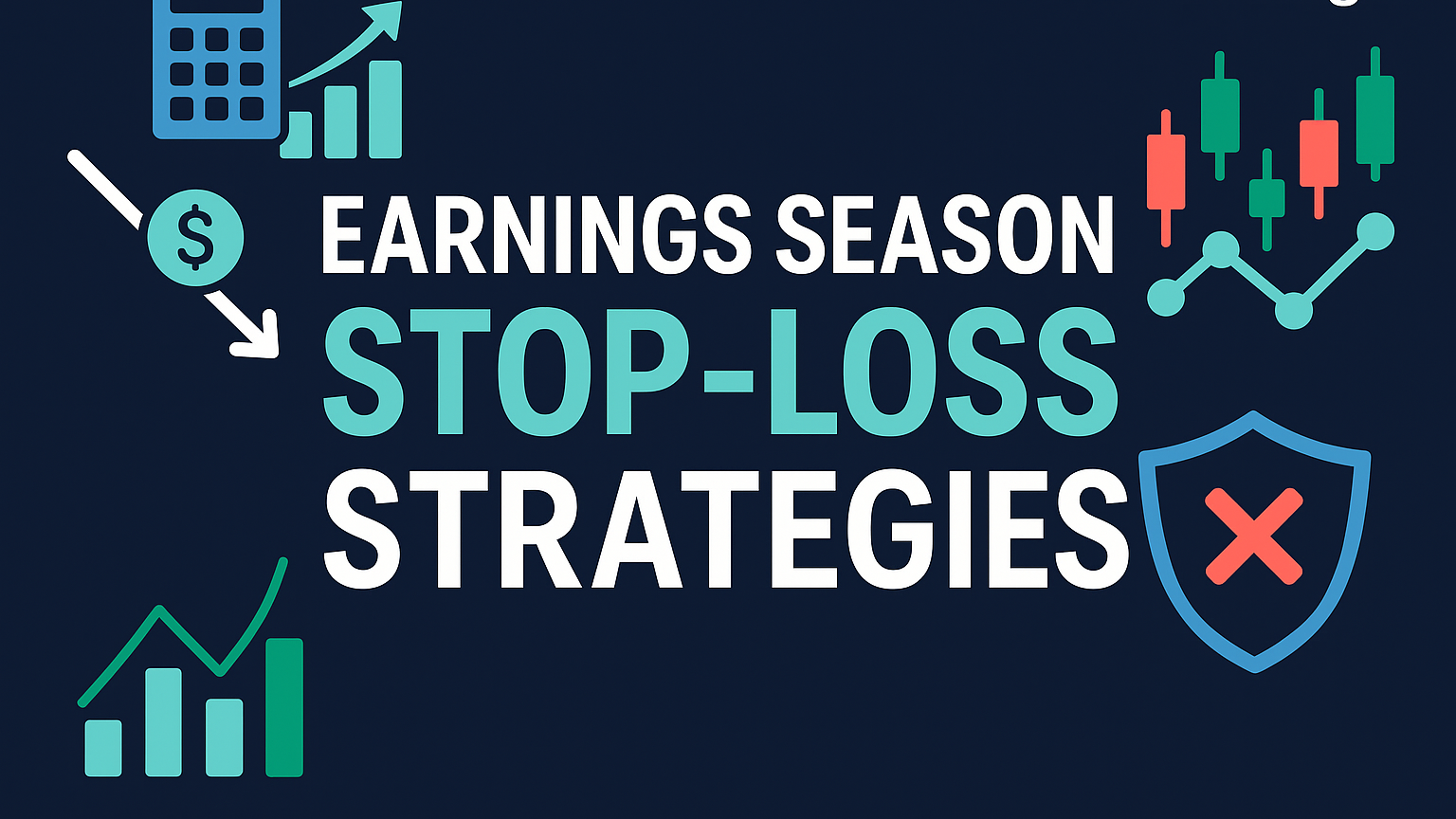Learn how to effectively scale into trades with pyramiding strategies to boost returns while managing risk and enhancing discipline.
Pyramiding is a trading technique where you start small and increase your position size only when the market moves in your favor. Unlike adding to losing trades, this strategy focuses on building on profitable positions during strong trends. Here's what you need to know:
- Start Small: Begin with a small position (1-2% of your capital) to minimize initial risk.
- Add to Winners Only: Increase your position size incrementally as the trade becomes profitable, ensuring each addition is smaller than or equal to the previous one.
- Avoid Losing Trades: Never add to a position that's not performing well.
- Confirm Trends: Use tools like moving averages, price structure, and volume to validate market trends before scaling in.
- Manage Risk: Adjust stop-loss levels as your position grows, and set clear exit rules to lock in profits.
This strategy works best in trending markets with consistent price movement and requires strict discipline to avoid overexposure or emotional decision-making. Backtesting and tools from LuxAlgo can help refine your approach before trading live.
Basic Rules of Pyramiding
Start Small and Add to Winners
The foundation of pyramiding lies in starting with a small position and gradually increasing it, but only when the trade is moving in your favor. This method keeps your initial risk low while allowing you to take advantage of strong, developing trends.
When beginning, your first position should only account for a small fraction of your total trading capital - ideally no more than 1-2% of your account. This cautious approach protects you in case your analysis is off or the trend doesn’t materialize as expected.
Once your initial position turns profitable and the trend shows consistent movement in your direction, you can start adding to it. However, only add after clear confirmation of the trend. For an uptrend, look for higher highs and higher lows; for a downtrend, watch for lower lows and lower highs.
The key here is to commit more capital only to trades that are already performing well. This ensures you’re building on strength rather than wishful thinking. To maintain balance, each additional position should be smaller than or equal to the previous one, creating the pyramid structure that gives this strategy its name.
This disciplined approach underscores one critical rule: never add to a losing trade.
Never Add to Losing Trades
A successful pyramiding strategy hinges on avoiding the temptation to increase your exposure to trades that are underperforming. One of the golden rules is to never add to losing positions.
Adding to a losing trade goes against the entire philosophy of pyramiding. Instead of building on strength, you’d be doubling down on a trade that has already proven your analysis wrong. This can escalate losses quickly, turning a minor setback into a significant blow to your account.
Pyramiding is designed to amplify your gains by increasing exposure to trades that are already working in your favor. By sticking to this principle, you minimize the risk of large losses if the market suddenly reverses.
This rule demands emotional discipline. It’s tempting to believe that a losing position might recover, but resisting this urge is what separates disciplined traders from those who risk blowing up their accounts by chasing bad trades.
Requirements for Successful Pyramiding
Beyond the basic rules of entry and avoiding losses, successful pyramiding depends on a few key elements: solid trend analysis, effective risk management, and clear exit plans.
First, accurate trend identification is crucial. You need to differentiate between genuine trends that have staying power and short-lived price movements that could reverse just as quickly. Misreading this can spell trouble for any pyramiding strategy.
Equally important is disciplined capital management. Before you even start, decide how much of your total capital you're willing to risk on the entire pyramiding sequence. Stick to this limit, no matter how appealing additional entries might seem. This ensures you avoid overexposure that could hurt your account if the trend reverses unexpectedly.
Risk management is non-negotiable. Use stop-loss orders and adjust them upward as your position grows. This locks in profits while protecting against sudden reversals. Additionally, establish clear exit strategies before entering the trade. These should outline when to stop adding to your position and when to close the trade entirely. Making these decisions in advance helps you avoid emotional decision-making during market volatility.
Finally, market conditions play a big role. Pyramiding works best in strong, trending markets with consistent price movements. In choppy or highly volatile markets, false breakouts and sudden reversals are more common, making this strategy much riskier.
| Pyramiding Method | Description | Risk Level | Best Market Conditions |
|---|---|---|---|
| Fixed Increment | Add the same number of units each time | Moderate | Steady, consistent trends |
| Proportional | Add a percentage of the original position | Higher | Strong, accelerating trends |
| Reverse Pyramid | Start large, add smaller amounts | Lower | Uncertain trend strength |
| Time-Based | Add at regular intervals if profitable | Variable | Long-term trending markets |
How to Implement Pyramiding Step-by-Step
Finding Strong Trends
Start by analyzing higher timeframes to confirm the strength of a trend. Look for markets showing clear, consistent movement in one direction across multiple timeframes. For example, an uptrend is often indicated by prices staying above a rising 50-day moving average, while a downtrend is marked by prices remaining below a declining average, accompanied by lower highs and lows.
Pay attention to trading volume as well - it should align with the trend. Avoid markets that move sideways or lack sufficient volume, as these conditions make pyramiding riskier[2].
Also, assess the price structure to ensure the trend is solid. In an uptrend, the formation of higher highs and higher lows typically signals a healthy pattern. Tools from LuxAlgo’s Price Action Concepts (PAC) toolkit can help identify key support and resistance levels, helping you differentiate between a genuine trend and temporary price fluctuations.
Setting Entry and Adding Rules
Establish clear entry points by using breakouts or retracements, and only add to your position when additional technical signals confirm the trend. Fibonacci retracements or pullbacks to key moving averages can provide logical opportunities to enter or expand your position, as long as the trend remains intact.
Define specific rules for when to add to your position. Some traders use percentage-based thresholds, such as adding to a position after every 2% favorable move. Others wait for price to break significant technical levels. Whatever your approach, ensure that new entries are supported by clear confirmation, such as sustained price movement and increased volume.
Don’t forget to consider external factors, like market events that could increase volatility. Before scaling in, check liquidity to ensure smooth trade execution[1]. As you add positions, adjust your stop-loss levels to protect your gains while still allowing the trend room to develop.
With your entry and scaling rules in place, the next step is to determine when to stop adding or exit the trade.
When to Stop Adding or Exit
Knowing when to stop building your position is just as crucial as deciding when to start. Exit rules are essential for locking in profits when the trend starts to weaken. Stop adding to your position if the trend loses momentum or if resistance levels hold firm.
Volume can also provide clues about a trend's strength. If volume declines as the price moves in the direction of the trend but spikes during pullbacks, it may signal weakening momentum. Set profit targets based on technical levels, like previous swing highs or major resistance points, which can act as natural exit zones.
Using trailing stops is another effective way to protect your profits while staying in the trade if the trend continues. LuxAlgo provides Signals & Overlays (S&O) on TradingView to help identify potential reversal points and entries using configurable alerts and overlays. Additionally, consider the broader market environment - if the overall market is approaching significant support or resistance levels, individual trades could face challenges, even if their trends appear strong.
As with your entries, managing risk should always be a priority when deciding to exit. Use technical resistance levels and declining volume as indicators to guide your decisions.
Managing Risk When Pyramiding
Moving Stop-Loss Levels
When you're pyramiding, adjusting your stop-loss levels is essential to keep your risk in check. Every time you add to your position, you're increasing your exposure, so your risk management strategy needs to evolve alongside your growing stake.
One effective way to manage this is by progressively moving your stop-loss levels. In an uptrend, move your stops higher; in a downtrend, shift them lower. For instance, once your first addition shows a profit, you can move your initial stop-loss to the breakeven point. This way, you protect your original investment while still allowing the trade to develop.
As the price continues to move in your favor, you can add smaller increments and adjust your stops to secure gains. Trailing stops can be particularly useful here. Set them just below higher lows in an uptrend or above lower highs in a downtrend. The key is finding the right balance - your trailing stops should protect your profits without forcing you out of the trade too early.
Use technical levels like support and resistance, moving averages, or swing points as guides for placing your stops. These levels become even more critical as your position size grows, helping you safeguard your increased exposure. Once your stop-loss adjustments are in place, the next step is managing your overall capital exposure.
Setting Capital Limits
To avoid turning pyramiding into overly aggressive trading, set clear limits on how much capital you're willing to risk. A good rule of thumb: never risk more than 2% of your total capital on a single trade [3]. This limit applies to the entire pyramided position, not just individual entries.
A scaled pyramiding approach can help you manage your capital more effectively. With this method, you reduce the size of each additional position as the trade progresses. This strategy allows you to lock in profits while keeping your overall risk under control [1].
Here are a few position sizing methods that you can use, depending on your trading style:
| Method | Description | Best For |
|---|---|---|
| Fixed-Dollar | Allocate the same dollar amount for each addition | Maintaining consistent risk per entry |
| Percentage-Based | Use a fixed percentage of your portfolio for each addition | Scaling risk proportionally |
| Volatility-Based | Adjust position size based on market volatility | Navigating volatile conditions |
Another layer of protection is setting daily stop levels. Establish a maximum loss you’re willing to accept for the day. If you hit that threshold, exit all your positions and step away until the next trading session. This prevents emotional decisions during tough periods [3].
Before you even start trading, plan your entry levels for additional units. Calculate the risk for each new addition and make sure your trailing stop-loss keeps the total position within your comfort zone [4]. Once these capital limits are defined, you can refine your strategy further through rigorous testing.
Testing and Improving Your Strategy
Before putting real money on the line, backtesting is a must for pyramiding strategies. LuxAlgo provides Backtesters on TradingView and the AI Backtesting Assistant to help you fine-tune your approach before entering live markets.
The AI Backtesting Assistant offers advanced features, allowing you to test your strategy across a wide range of assets and scenarios. This gives you the precision needed to develop a solid trading plan. You can also review the workflow in the AI Backtesting documentation.
Start with simple pyramiding rules and gradually add complexity as your backtesting results improve. Experiment with different position sizing methods, stop-loss adjustments, and entry criteria to see how they perform in various market conditions. Pay close attention to how your strategy holds up during trending markets compared to sideways movements.
During backtesting, focus on key metrics like maximum drawdown, win rate, average winning trade versus average losing trade, and total return. A strong pyramiding strategy should deliver consistent results across different timeframes and market environments.
If backtesting reveals excessive drawdowns, tweak your position sizing or stop-loss rules. Testing these adjustments ensures that your risk management strategy can handle a variety of market conditions. The ultimate goal is to strike a balance - maximize your returns without exposing yourself to unacceptable levels of risk.
Practical Examples and Best Practices
Pyramiding in Different Market Types
Let’s start with a bullish example. Imagine you’re trading in a steady uptrend. You begin with 100 shares at $50.00. Once the price climbs 5% to $52.50, you add 50 more shares. As it continues to rise to $55.00, you add another 25 shares, and at $57.00, you add 12 more shares. This gradual scaling lets you ride the trend while managing risk effectively [2].
Now, let’s flip the script to a bearish market. In a clear downtrend - characterized by consistent lower highs and lower lows - you’d take a short position and increase it incrementally as the price drops, following the same logic but in reverse.
However, pyramiding in range-bound or choppy markets is a different beast. These markets are prone to frequent reversals, which can quickly turn profitable trades into losses. Without a clear trend, the strategy often lacks the sustained movement needed to justify adding to positions.
The takeaway? Before diving into any pyramiding strategy, focus on market selection. Look for strong trends with low volatility, as these conditions are ideal for scaling into positions. Analyzing trend strength and volatility patterns is key to making informed decisions.
Using LuxAlgo Tools for Pyramiding
LuxAlgo provides tools on TradingView to make pyramiding more precise and data-driven. For example:
- Oscillator Matrix: Helps detect divergences, signaling potential trend reversals or continuations.
- Signals & Overlays: Provides clear entry alerts, helping you time your additions effectively.
- Screeners: Filters for setups in strong trends with low volatility, giving you a head start in identifying favorable conditions.
One standout offering is the AI Backtesting Assistant, which lets you test different pyramiding strategies. You can experiment with position sizing, entry timing, and stop-loss adjustments across various market conditions. This allows you to refine your approach and validate your rules before risking actual capital.
By integrating these tools, traders can approach pyramiding with greater confidence and precision.
Common Mistakes to Avoid
Pyramiding can be powerful, but it’s easy to stumble if you’re not careful. Here are some common pitfalls to watch out for:
- Overleveraging: Adding too much to your position can amplify losses. Always calculate your account size and maximum risk in dollar terms before trading. If you can’t quickly estimate your potential loss, your trade might be too complex [6].
- Chasing Losses: Increasing your position size after a loss is a slippery slope. Trying to "win back" losses often leads to overexposure. Stick to your predefined risk limits instead [6].
- Neglecting Risk Parameters: Always set clear stop-loss orders and profit targets before entering a trade. This ensures you have a plan for both success and failure [6].
- Focusing on Short-Term Gains: Prioritizing quick wins over consistent profitability can lead to overconfidence. Instead, track your long-term performance using metrics like the profit-to-loss ratio and capital preservation [6].
- Low Reward-to-Risk Ratios: Pyramiding works best when the potential reward is at least three times the risk. Without this, the strategy loses its edge [7].
- Ignoring Market Conditions: Attempting to pyramid in choppy or range-bound markets can lead to multiple unmanaged losses. These environments lack the sustained trends needed for the strategy to succeed [2].
Conclusion
Key Points for Pyramiding Success
Pyramiding provides traders with a structured way to amplify returns by building on profitable positions. This method encourages disciplined trading habits and helps traders steer clear of emotional decisions that could derail their success [2].
However, pyramiding isn't suitable for all market conditions. It works best in markets with clear upward or downward trends supported by technical analysis. In choppy or sideways markets, this strategy tends to falter due to the lack of consistent trends [2].
Risk management and position sizing are crucial to making this strategy work. Begin with a modest initial position and add to it incrementally as the trade moves in your favor. Each addition should be smaller than the previous one. Set your entry points based on percentage price increases or technical levels, establish exit strategies before entering a trade, use trailing stops to protect profits, and avoid taking on excessive risk [2][5].
With these principles in mind, you can confidently start applying the strategy.
Next Steps for Traders
Begin by backtesting your pyramiding strategy with historical data to see how it performs under various market conditions. Tools like LuxAlgo’s AI Backtesting Assistant can help you refine your approach, experiment with position sizing, and fine-tune entry and exit rules before committing real money.
Having a well-defined plan is essential. Decide in advance when you'll add to your positions, how much you'll add, and under what conditions you'll exit. These predefined rules can help you stay objective and avoid letting emotions influence your decisions during live trading [5].
When you're ready to implement pyramiding, start small. Focus on markets with clear, strong trends and relatively low volatility. Use resources like LuxAlgo’s Screeners to identify promising setups, the Signals & Overlays toolkit to time your position additions, and the Oscillator Matrix to monitor for potential trend reversals.
What Is Pyramiding in Trading? [Explained]
FAQs
What makes pyramiding unique compared to other trading strategies, and why should you only add to winning trades?
Pyramiding takes a different approach compared to many other trading strategies by focusing on adding to winning positions as the market moves in your favor. Instead of doubling down on losing trades, this method uses unrealized profits to expand your position while keeping risk in check.
The main advantage of this strategy is that it allows you to ride strong market trends without increasing the risk of larger losses. By gradually scaling into trades, you can boost your potential returns while sticking to a disciplined risk management plan. This way, your capital is directed toward positions that are already performing well, helping to avoid overexposure to unfavorable market shifts.
What are the most effective tools for confirming trends when using pyramiding strategies?
Traders aiming to confirm trends for effective pyramiding often turn to tools like the Average Directional Index (ADX) to gauge the strength of a trend and the Aroon indicator to evaluate its direction and momentum. These tools are invaluable for determining if the market's movement is robust enough to justify adding to an existing position.
Other commonly used tools include the Moving Average Convergence Divergence (MACD), which signals trend continuation, and trendline analysis, which helps identify and confirm key breakout levels. Oscillators like the Relative Strength Index (RSI) are also useful for verifying momentum, especially when paired with volume analysis. By combining these tools, traders can create a more dependable framework for scaling into profitable trades while keeping risk under control.
How can traders manage risk and set stop-loss levels effectively when using a pyramiding strategy?
To handle risk effectively when using a pyramiding strategy, traders should begin by setting an initial stop-loss based on a small percentage of their trading capital - typically around 1-2%. This helps cap potential losses right from the start. As the trade evolves and new positions are added, it’s important to adjust those stop-loss levels upward. This not only locks in profits but also reduces the risk of losing gains if the market reverses.
One popular method is employing trailing stop-losses, which automatically adjust as the market price moves in your favor. This approach is particularly useful in trending markets, as it allows traders to secure profits while staying protected against sudden downturns. It’s a practical way to balance maximizing returns with maintaining strict risk control.
References
- Understanding Moving Averages (LuxAlgo)
- Liquidation Levels – Indicator (LuxAlgo)
- PAC Exits – Documentation (LuxAlgo)
- Trending Market Toolkit (LuxAlgo)
- LuxAlgo – Official Site
- Volume Forecasting – Indicator (LuxAlgo)
- Breakouts with Tests & Retests – Indicator (LuxAlgo)
- Support & Resistance Levels with Breaks (LuxAlgo)
- Using Fibonacci Levels to Time Retracements (LuxAlgo)
- Market Structure Trailing Stop – Indicator (LuxAlgo)
- Sessions – Indicator (LuxAlgo)
- AI Backtesting Assistant – Main Page (LuxAlgo)
- AI Backtesting – Fetching Strategies (LuxAlgo Docs)
- Breakout Detector – Previous MTF High/Low (LuxAlgo)
- Volumetric Toolkit – Indicator (LuxAlgo)
External Resources
- What Is a Pyramiding Strategy? (FXOpen)
- How to Use Pyramiding (Managed Accounts IR)
- Determine Position Size (Investopedia)
- Adding to a Winning Position (BabyPips)
- Pyramid Trading Strategy (Daily Price Action)
- Pyramiding Tutorial – Pros & Cons (Trading Cup)
- Average Directional Index (Wikipedia)
- MACD (Wikipedia)
- Relative Strength Index (Investopedia)
- Aroon Indicator (Investopedia)








